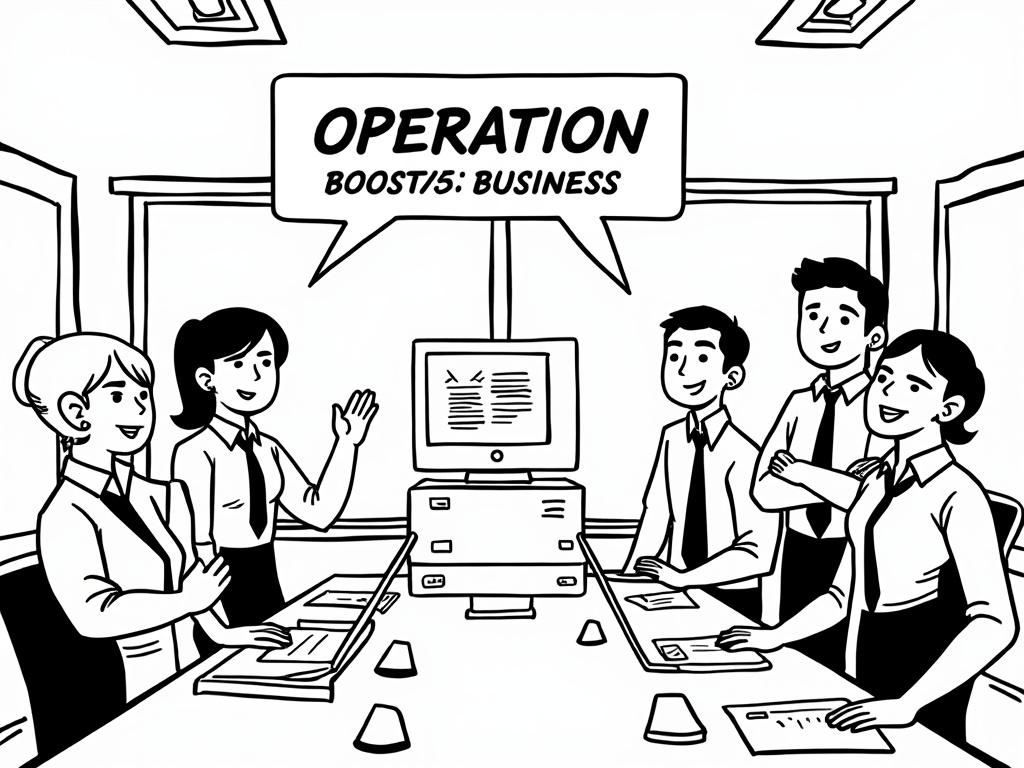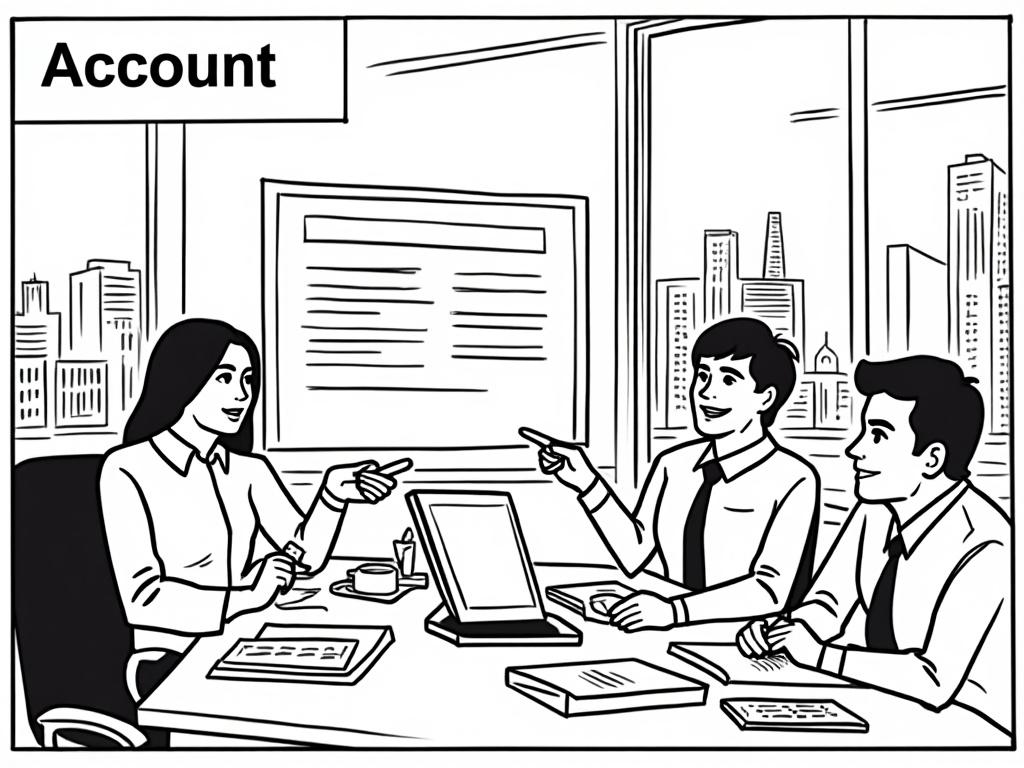
Operation 300bn: How the UAE’s Ambitious Industrial Revolution Will Reshape the Global Economy
Reading time: 12 minutes
Table of Contents
- Understanding Operation 300bn: The Vision Behind the Numbers
- Strategic Pillars: Building Tomorrow’s Industrial Foundation
- Economic Impact: Breaking Down the Financial Transformation
- Navigating Challenges: From Vision to Reality
- Investment Opportunities: Where Smart Money is Moving
- Global Implications: Reshaping International Trade
- Your Industrial Advantage: Capitalizing on the UAE’s Transformation
- Frequently Asked Questions
Understanding Operation 300bn: The Vision Behind the Numbers
Ever wondered what happens when a nation decides to completely reinvent its economic DNA? The UAE’s Operation 300bn isn’t just another government initiative—it’s a calculated gamble to transform the Emirates into the world’s next industrial powerhouse.
Here’s the straight talk: This isn’t about oil dependency anymore. It’s about creating a manufacturing ecosystem that could rival Germany’s industrial might or South Korea’s technological prowess. The ambitious plan targets 300 billion dirhams ($81.6 billion) in industrial output by 2031, representing a staggering 75% increase from current levels.
Key Strategic Insights:
- Diversifying beyond oil to sustainable industrial growth
- Creating 13,500 new industrial facilities
- Generating 25,000 specialized job opportunities
- Establishing the UAE as a global manufacturing hub
But here’s what makes this different from typical government promises: The UAE has already allocated 2 billion dirhams in direct incentives, with financing partnerships exceeding 13 billion dirhams secured through major banks.
Strategic Pillars: Building Tomorrow’s Industrial Foundation
Advanced Manufacturing Technologies
Quick scenario: Imagine walking through an industrial zone where artificial intelligence optimizes production lines, robots handle precision assembly, and 3D printing creates complex components on-demand. That’s not science fiction—that’s the UAE’s industrial reality taking shape.
The country is investing heavily in Industry 4.0 technologies, including:
- Smart manufacturing systems powered by IoT
- Automated quality control using machine learning
- Predictive maintenance reducing downtime by up to 30%
- Digital twin technology for optimized production
Sustainable Industrial Practices
Well, here’s where it gets interesting: The UAE isn’t just chasing growth—they’re pioneering green industrial transformation. Sheikh Mohammed bin Rashid Al Maktoum, UAE Vice President, recently emphasized: “Our industrial strategy must align with our net-zero commitments by 2050.”
This translates into concrete actions:
- Solar-powered manufacturing facilities
- Water recycling systems reducing consumption by 40%
- Circular economy principles in waste management
- Green hydrogen production for clean energy storage
Strategic Geographic Positioning
Consider this competitive advantage: The UAE sits at the crossroads of Asia, Africa, and Europe, providing unmatched access to 2.5 billion consumers within an 8-hour flight. This isn’t just geographic luck—it’s a strategic asset being leveraged through:
| Infrastructure Element | Current Capacity | Expansion Target | Economic Impact |
|---|---|---|---|
| Port Capacity | 25 million TEU | 35 million TEU | 40% increase in trade volume |
| Air Cargo Facilities | 4.5 million tons | 7.2 million tons | 60% growth in export capacity |
| Industrial Zones | 45 operational zones | 65 zones by 2030 | 44% expansion in manufacturing space |
| Renewable Energy | 14% of total capacity | 50% by 2050 | $150 billion in clean energy investment |
Economic Impact: Breaking Down the Financial Transformation
Let’s dive deep into the numbers that matter. The UAE’s industrial transformation isn’t just about impressive statistics—it’s about fundamental economic restructuring that creates lasting competitive advantages.
GDP Contribution Analysis
Currently, manufacturing contributes approximately 8.4% to the UAE’s GDP. Operation 300bn aims to boost this to 20% by 2031. Here’s what this transformation looks like in practice:
Industrial Sector Growth Projection:
8.4% of GDP
14% of GDP
20% of GDP
Employment Generation Impact
Beyond the headlines, Operation 300bn is creating a new category of high-skilled industrial jobs. The UAE is partnering with international technical institutes to develop specialized training programs, ensuring workers can transition from service-sector roles to advanced manufacturing positions.
Real-world example: ADNOC’s new petrochemicals complex in Ruwais has already created 2,500 direct jobs, with an average salary 35% higher than the national median. This pattern is being replicated across multiple industrial sectors.
Navigating Challenges: From Vision to Reality
Challenge 1: Skilled Workforce Development
Here’s the reality check: Advanced manufacturing requires specialized skills that traditionally haven’t been developed locally. The UAE faces a skill gap challenge where 60% of required technical positions currently rely on expatriate expertise.
Strategic Solution: The government has launched the “Industrial Skills Academy,” partnering with companies like Siemens and ABB to provide hands-on training. Early results show promise—85% of program graduates secure employment within six months, with 70% in leadership roles within two years.
Challenge 2: Supply Chain Integration
Well, here’s where complexity meets opportunity: Building a robust industrial ecosystem requires seamless integration between raw material suppliers, manufacturers, and distribution networks. The UAE’s current supply chain efficiency ranks 11th globally, but Operation 300bn targets a top-5 position by 2030.
Practical Roadmap:
- Digital Integration: Blockchain-based supply chain tracking
- Regional Partnerships: Strategic alliances with Asian manufacturers
- Inventory Optimization: AI-driven demand forecasting systems
- Risk Mitigation: Diversified supplier networks across multiple continents
Investment Opportunities: Where Smart Money is Moving
Ready to transform market insights into investment advantages? The UAE’s industrial transformation has created several high-potential sectors where strategic investors are positioning themselves for long-term growth.
Priority Investment Sectors
Advanced Materials Manufacturing: With global demand for specialty materials growing at 12% annually, the UAE is attracting companies like BASF and DuPont to establish regional production facilities. Investment ticket sizes range from $50 million to $500 million, with government co-investment options available.
Aerospace Component Production: Boeing’s recent announcement of a $2 billion investment in UAE-based suppliers highlights the sector’s potential. The country aims to capture 5% of the global aerospace supply chain by 2030.
Financial Incentives Breakdown
The UAE offers competitive incentive packages that make industrial investment attractive:
- Corporate Tax Exemptions: Up to 50 years for qualifying industrial projects
- Import Duty Waivers: 100% exemption on manufacturing equipment
- Land Lease Benefits: Long-term leases at below-market rates
- Utility Subsidies: Reduced rates for industrial electricity and water consumption
Global Implications: Reshaping International Trade
Consider this broader perspective: The UAE’s industrial ambitions aren’t happening in isolation. They’re part of a global reconfiguration of manufacturing networks as companies seek alternatives to traditional production centers.
McKinsey’s recent analysis suggests that 25% of global trade flows will shift to new manufacturing hubs by 2030. The UAE is positioning itself to capture a significant portion of this movement, particularly in sectors where proximity to emerging markets provides competitive advantages.
Case Study: Turkish appliance manufacturer Arçelik recently chose Dubai Industrial City over locations in Eastern Europe for its regional headquarters and production facility. The decision was influenced by access to African and South Asian markets, representing 40% cost savings in logistics compared to European alternatives.
Your Industrial Advantage: Capitalizing on the UAE’s Transformation
Now comes the strategic question: How can businesses, investors, and professionals position themselves to benefit from this industrial revolution?
For International Manufacturers: The UAE offers a unique proposition—combine advanced infrastructure with emerging market access. Companies establishing operations now benefit from first-mover advantages in sectors like clean technology and advanced materials.
For Investors: Look beyond traditional real estate and focus on industrial infrastructure, logistics, and technology companies supporting the manufacturing ecosystem. Private equity funds targeting UAE industrial assets have generated average returns of 18% annually over the past three years.
For Professionals: Technical expertise in automation, quality management, and supply chain optimization will be in high demand. Professional certification programs aligned with Industry 4.0 standards offer career advancement opportunities.
Pro Tip: The right timing isn’t just about avoiding risks—it’s about positioning yourself before the transformation reaches full momentum. Early participants in the UAE’s industrial development have consistently outperformed later entrants by 2-3x in terms of market share and profitability.
Frequently Asked Questions
What makes Operation 300bn different from previous UAE economic initiatives?
Operation 300bn focuses specifically on manufacturing and industrial production, backed by concrete financial commitments and measurable targets. Unlike broader economic diversification programs, this initiative includes dedicated funding mechanisms, specific job creation goals, and partnerships with international industrial leaders. The government has committed 2 billion dirhams in direct incentives, making it one of the most substantial industrial development programs in the region.
How can foreign companies participate in Operation 300bn opportunities?
Foreign companies can participate through several pathways: direct industrial investment in UAE-based manufacturing facilities, joint ventures with local partners, or technology transfer agreements. The UAE offers 100% foreign ownership in industrial sectors, streamlined licensing processes, and access to preferential financing through government-backed programs. Companies should engage with UAE Trade Development offices or industrial zone authorities to explore specific opportunities aligned with their capabilities.
What are the realistic timelines for seeing returns on industrial investments in the UAE?
Based on current industrial projects, investors typically see initial returns within 18-24 months for manufacturing operations, with full return on investment achieved in 4-6 years. However, companies benefiting from government incentives and operating in high-demand sectors like renewable energy components or advanced materials often achieve profitability faster. The key factor is alignment with UAE’s strategic priorities and access to both domestic and export markets through the country’s logistics infrastructure.
As global manufacturing reshapes itself around sustainability, technology, and market access, will you be watching from the sidelines or positioning yourself at the center of the UAE’s industrial transformation? The next decade will separate the strategic players from the spectators—and Operation 300bn represents one of the most significant opportunities to be part of this global economic shift.

Article reviewed by Jonas Olsen, Oil & Energy Investments | Sovereign Wealth Strategies, on June 4, 2025




